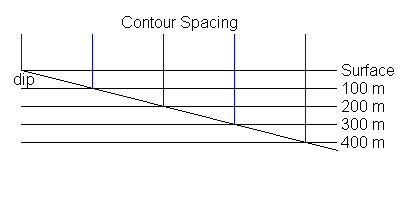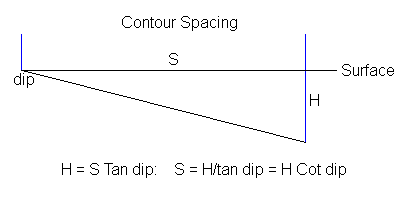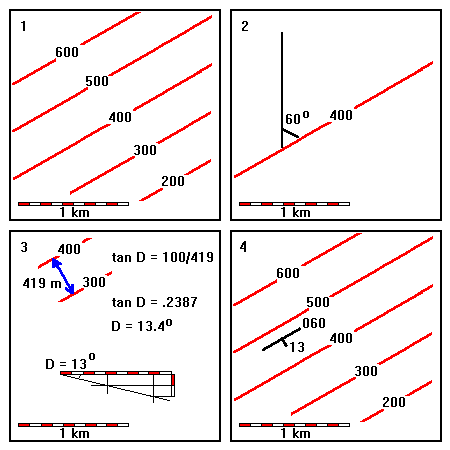Find Strike and Dip of a Plane from Structure Contours
Steven Dutch, Professor Emeritus, Natural and Applied Sciences, University of Wisconsin - Green Bay
The strike is easy -- it's simply the azimuth of the structure contours.
In this case we have the spacing of the structure contours and need to find the dip. There are two ways to do this.
1. Draw a simple cross-section and measure the dip

2. Calculate the dip trigonometrically

H = S Tan dip, thus dip = Arctan (H/S)
You can use any vertical distance and the corresponding contour spacings in your diagram or calculation. In fact, it's probably best to measure across several contour intervals because your measurements will be more accurate.
Example
 |
1. The problem. Find the dip and strike of this layer from its structure contours. 2. The strike is simply the azimuth of the structure contours. 3. Determine the dip either by drawing a cross-section or by trigonometry. The fraction of a degree in the calculation is probably not significant. 4. Final result. |
A Note About Accuracy
If you calculate dip using trigonometry, the display on the calculator will be much more precise than a dip measured graphically on a cross-section. However, the dip can only be as accurate as the contours on the original map, and the accuracy of your measurements from the map.
There are enough sources of error in structural geology without adding to them artificially. Therefore, constructions and calculations need to be as accurate as possible, especially for complex operations where results from one step are used in another step. However, be aware of the limitations in the original data and report final results only to the true level of significance.
Return to Course Syllabus
Return to Techniques Manual Index
Return to Professor Dutch's Home Page
Created 5 January 1999, Last Update 12 June 2020